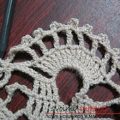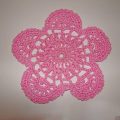How to start knitting. Yarn for hand knitting
Good day! Recently, wandering around the Internet and looking at yarns for hand knitting of various types, I came across an interesting article about yarn. This article will be useful as a beginner as a guide on how and how to start knitting, and already dealing with knitting. Do you know why acrylic wool is made of yarn! What makes silk and what cheaper yarn can it be replaced with! Flax is so comfortable and so expensive - we are looking for matching properties of yarn! I made a special translation of the article and now I suggest that you get acquainted with it, learn a lot of new and interesting about yarn, its properties and characteristics, textures and manufacturing methods and of course how to choose yarn! The article does not describe all types of yarn, but nevertheless an overview of the main, most popular made! The yarn used for hand knitting is made of various fibers. Natural yarn of animal origin (wool, angora, mohair, silk, alpaca), vegetable origin (cotton, linen) or artificial, made by human hands (nylon, acrylic). What is a yarn! Yarn is fibers that are twisted into a continuous thread of the required thickness. Some types of yarn are formed by twisting several strands. The structure and characteristics of the thread are formed using a combination of different types of fiber. Wool and other natural fibers, often in combination with artificial fibers. This is done in each case with a specific purpose: to reduce the cost of yarn, to increase strength or to change some properties for the better. Wool, for example, can then be washed in a washing machine. The twisting of the yarn can also be different. The tightly twisted yarn is dense and smooth, used for outerwear. Loosely twisted yarn is used for soft knitwear.  Yarn of animal origin: A woolen thread is made from the wool of a domestic sheep. Wool is well dyed, it is fire-resistant in nature material (it does not burn, but smolders), continues to warm even when wet, has the greatest water conductivity. Natural wool requires hand washing. Wool that has undergone special treatment can be washed in a washing machine. Wool requires special care and will take the former state only when properly washed. If washed in too hot water, it will sit down and even fall down to the state of felt. Mohair is made from wool of Angora goats. Mohair is particularly durable, resistant to pollution, it is well painted and does not fall well. Despite the density, mohair is used for knitting fluffy clothes and scarves. This yarn is erased, giving the fibers a rough surface and creating a negligent effect.
Yarn of animal origin: A woolen thread is made from the wool of a domestic sheep. Wool is well dyed, it is fire-resistant in nature material (it does not burn, but smolders), continues to warm even when wet, has the greatest water conductivity. Natural wool requires hand washing. Wool that has undergone special treatment can be washed in a washing machine. Wool requires special care and will take the former state only when properly washed. If washed in too hot water, it will sit down and even fall down to the state of felt. Mohair is made from wool of Angora goats. Mohair is particularly durable, resistant to pollution, it is well painted and does not fall well. Despite the density, mohair is used for knitting fluffy clothes and scarves. This yarn is erased, giving the fibers a rough surface and creating a negligent effect.  Angora is made from rabbit. The fabric obtained from this yarn is inelastic, very fluffy, soft and warm.
Angora is made from rabbit. The fabric obtained from this yarn is inelastic, very fluffy, soft and warm.  Silk is made by silkworms. The yarn is made from cocoons after leaving them with butterflies or from fibers. “Raw” silk still maintains the secretion of the silkworm. There are several varieties of silkworm. Silk "Tussor" is obtained from the cocoons of wild silkworms, it has a brown color. The color of silk directly depends on the food that silkworms feed on, so the domesticated silkworm is fed in a special way. Silk color can be white, green or yellow. Silk retains heat, absorbs moisture, forms less to the pellet compared to wool, is very durable and more even when knitting, does not shrink and does not stretch when washed.
Silk is made by silkworms. The yarn is made from cocoons after leaving them with butterflies or from fibers. “Raw” silk still maintains the secretion of the silkworm. There are several varieties of silkworm. Silk "Tussor" is obtained from the cocoons of wild silkworms, it has a brown color. The color of silk directly depends on the food that silkworms feed on, so the domesticated silkworm is fed in a special way. Silk color can be white, green or yellow. Silk retains heat, absorbs moisture, forms less to the pellet compared to wool, is very durable and more even when knitting, does not shrink and does not stretch when washed.  Cashmere is made from the undercoat of cashmere goats. The high cost of cashmere is due to the fact that only a few ounces of fiber is obtained from each goat per year. It is a very delicate thread, more fragile than wool and more resistant to abrasion. It is often mixed with wool to give greater strength.
Cashmere is made from the undercoat of cashmere goats. The high cost of cashmere is due to the fact that only a few ounces of fiber is obtained from each goat per year. It is a very delicate thread, more fragile than wool and more resistant to abrasion. It is often mixed with wool to give greater strength.  Camel yarn is made from bicorny woolcamel (Bactriana). Camel wool is not bleached, respectively, it is used or unpainted, or painted in dark colors. This yarn is fragile and light.
Camel yarn is made from bicorny woolcamel (Bactriana). Camel wool is not bleached, respectively, it is used or unpainted, or painted in dark colors. This yarn is fragile and light.  Vicuna (family of camelids). Wool collection is done once a year, they are sheared like llamas and sheep. Their hair is thinner than any other yarn of animal origin.
Vicuna (family of camelids). Wool collection is done once a year, they are sheared like llamas and sheep. Their hair is thinner than any other yarn of animal origin. 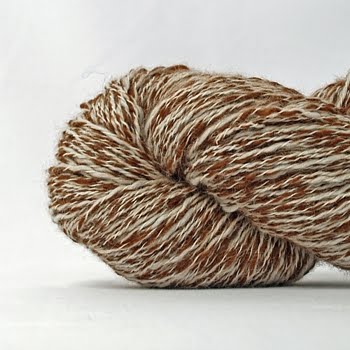 Alpaca is the younger relative of the lama, but thisyarn is more expensive. The yarn does not fall down and does not form the pellets. The yarn comes in fifteen natural colors (according to the color of the animal) and is denser than wool. Llama's undercoat is very similar to alpaca hair.
Alpaca is the younger relative of the lama, but thisyarn is more expensive. The yarn does not fall down and does not form the pellets. The yarn comes in fifteen natural colors (according to the color of the animal) and is denser than wool. Llama's undercoat is very similar to alpaca hair.  Musk ox wool is a yarn that is very difficult to find. It is made, as the name suggests from the wool of the musk ox, it reminds pale gray cashmere, but this yarn does not sit down.
Musk ox wool is a yarn that is very difficult to find. It is made, as the name suggests from the wool of the musk ox, it reminds pale gray cashmere, but this yarn does not sit down. 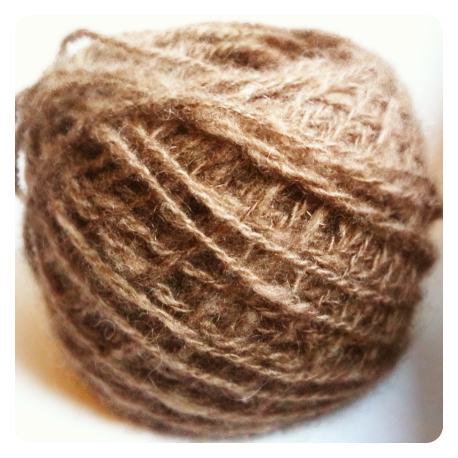 Vegetable yarn: Cotton - made from the boxes around the seeds of cotton. Cotton is heavy, dense and inelastic. Despite the fact that after washing the cotton sheet returns to its original form, over time, this property is lost. Cotton is good to wear in a cool climate, but not in hot (unlike wool), but because it dries very slowly. The strength of the thread is weaker than silk or linen, but greater than that of wool. Flax - made from the grass of flax. This is a very strong yarn, stronger than all the others. It absorbs moisture much better than cotton and dries much faster, which makes the yarn more comfortable to wear in the heat than cotton. Flax is easier to wash than wool and it does not stretch and does not shrink.
Vegetable yarn: Cotton - made from the boxes around the seeds of cotton. Cotton is heavy, dense and inelastic. Despite the fact that after washing the cotton sheet returns to its original form, over time, this property is lost. Cotton is good to wear in a cool climate, but not in hot (unlike wool), but because it dries very slowly. The strength of the thread is weaker than silk or linen, but greater than that of wool. Flax - made from the grass of flax. This is a very strong yarn, stronger than all the others. It absorbs moisture much better than cotton and dries much faster, which makes the yarn more comfortable to wear in the heat than cotton. Flax is easier to wash than wool and it does not stretch and does not shrink.  Rami - made from nettle. This yarn is used to replace flax yarn, as it is cheaper. The quality corresponds to flax.
Rami - made from nettle. This yarn is used to replace flax yarn, as it is cheaper. The quality corresponds to flax. 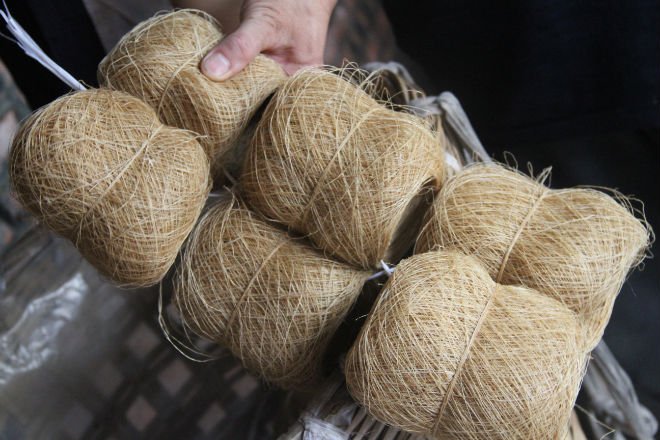 Viscose (rayon) is made fromnatural ingredients by artificial means. Viscose is a weak fiber, but it is a remarkable absorbent, dries quickly and has stretching properties (but this property can not be restored after automatic drying).
Viscose (rayon) is made fromnatural ingredients by artificial means. Viscose is a weak fiber, but it is a remarkable absorbent, dries quickly and has stretching properties (but this property can not be restored after automatic drying).  Man-made yarn: Nylon is a lightweight, durable, elastic material that is resistant to abrasion, does not stretch and does not shrink (except for processing with hot temperatures), and is easily erased. Most often combined with wool, to give wool strength and elasticity. Polyester is the most common type of synthetic yarn. Polyester yarn retains its shape. It is combined with natural yarns to give them strength and stability. Polyester is very easy to wash and comfortable to wear, much more than many other synthetic materials. Acrylic is the most common synthetic yarn for knitting. It is elastic, strong enough, pleasant to the touch and light. Acrylic yarn is easy to make so that it would look like natural yarn. Acryl is sold as a substitute for wool. However, acrylic less repels moisture and, accordingly, in the wet state will not still warm. It is highly flammable and the fibers will shrink with heat. Acrylic yarn is often used to create new and unusual textures and characteristics that are not available with natural fibers. Metallic thread - used with other, more durable yarns.
Man-made yarn: Nylon is a lightweight, durable, elastic material that is resistant to abrasion, does not stretch and does not shrink (except for processing with hot temperatures), and is easily erased. Most often combined with wool, to give wool strength and elasticity. Polyester is the most common type of synthetic yarn. Polyester yarn retains its shape. It is combined with natural yarns to give them strength and stability. Polyester is very easy to wash and comfortable to wear, much more than many other synthetic materials. Acrylic is the most common synthetic yarn for knitting. It is elastic, strong enough, pleasant to the touch and light. Acrylic yarn is easy to make so that it would look like natural yarn. Acryl is sold as a substitute for wool. However, acrylic less repels moisture and, accordingly, in the wet state will not still warm. It is highly flammable and the fibers will shrink with heat. Acrylic yarn is often used to create new and unusual textures and characteristics that are not available with natural fibers. Metallic thread - used with other, more durable yarns.  Fluffy yarns - which hide the stitches themselves,which is like wool. They are warmer and more comfortable, although the wear is much smaller and often quickly lose their fluffiness. Shaped threads - yarn with unusual textures, colors or appearance. This is achieved by combining different fibers, using a different twisting density. For example, Slub yarn has a rough surface, with separate seals. It combines layers of even and containing thickening, which forms unevenness when mating.
Fluffy yarns - which hide the stitches themselves,which is like wool. They are warmer and more comfortable, although the wear is much smaller and often quickly lose their fluffiness. Shaped threads - yarn with unusual textures, colors or appearance. This is achieved by combining different fibers, using a different twisting density. For example, Slub yarn has a rough surface, with separate seals. It combines layers of even and containing thickening, which forms unevenness when mating. 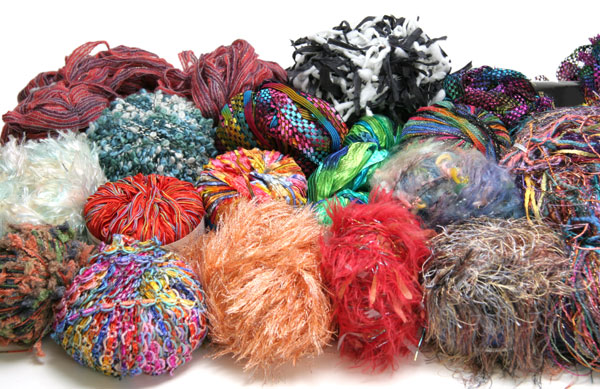 A crepe is a yarn that contains tiny nipples. Boucle - very tight twisted yarn, combined with yarn seals (balls). Herbalist is a yarn with long stitches protruding along the entire length of the thread. When the product is connected, these strings stick out of the canvas and create a fluffy look. Blue yarn is a special type of yarn, which is cut from a special fabric. It is twisted in the process of knitting and strews along the edge of the cut. Ribbon yarn - yarn for hand knitting in the form of thin ribbons. Despite the fact that most knitters when using this yarn allow it to lie in an arbitrary state and twist, it is more beautiful when it goes smoothly and each column is knitted neatly. Translation of an article site: Especially for the site: The next step for the beginning knitter will be an article on. Stay up to date! Be the first to know about new articles! Subscription: "Interesting articles about knitting" Your e-mail: * Your name: *
A crepe is a yarn that contains tiny nipples. Boucle - very tight twisted yarn, combined with yarn seals (balls). Herbalist is a yarn with long stitches protruding along the entire length of the thread. When the product is connected, these strings stick out of the canvas and create a fluffy look. Blue yarn is a special type of yarn, which is cut from a special fabric. It is twisted in the process of knitting and strews along the edge of the cut. Ribbon yarn - yarn for hand knitting in the form of thin ribbons. Despite the fact that most knitters when using this yarn allow it to lie in an arbitrary state and twist, it is more beautiful when it goes smoothly and each column is knitted neatly. Translation of an article site: Especially for the site: The next step for the beginning knitter will be an article on. Stay up to date! Be the first to know about new articles! Subscription: "Interesting articles about knitting" Your e-mail: * Your name: *  Share in social. networks
Share in social. networks  </a> Navigation by records
</a> Navigation by records
How to start knitting. Knitting yarn: 9 comments
Add a comment Your e-mail will not be published. Required fields are marked * Comment Name * Email * Website
